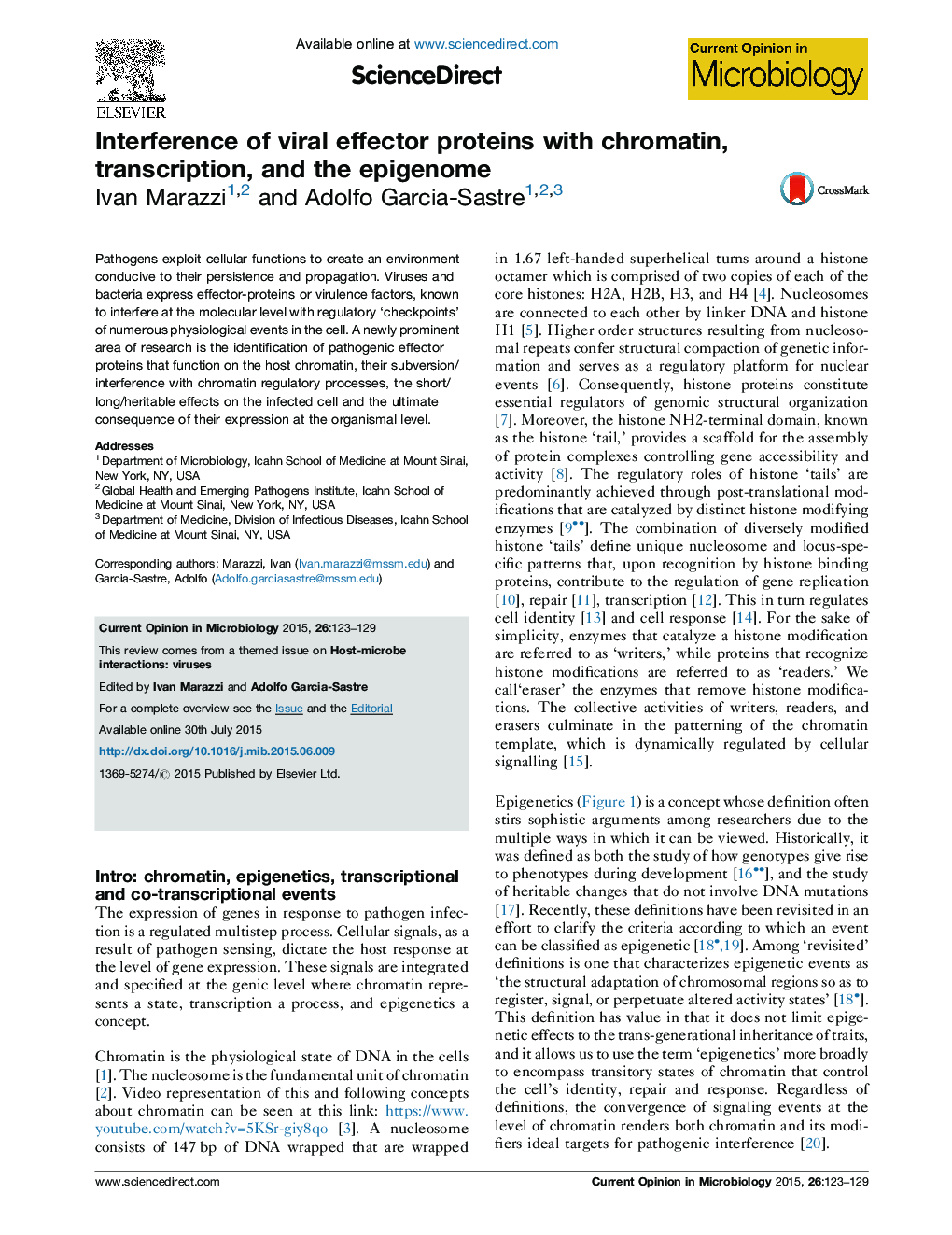| Article ID | Journal | Published Year | Pages | File Type |
|---|---|---|---|---|
| 3399039 | Current Opinion in Microbiology | 2015 | 7 Pages |
•Pathogens exploit cellular functions to their own advantage to create an environment conducive to their persistence and propagation.•Viruses and bacteria express effector-proteins or virulence factors, known to interfere at the molecular level with regulatory ‘checkpoints’ of numerous physiological events in the cell.•A newly prominent area of research is the identification of pathogenic effector proteins that function on the host chromatin, their subversion/interference with chromatin regulatory processes, the short/long/heritable effects on the infected cell and the ultimate consequence of their expression at the organismal level.•Since viral infection generates pleiotropic effects in the infected cell, it is often difficult to discern between the cause and effect relationships of epigenetic modification, cell signaling and viral interference. Indeed, epigenetic and transcriptional deregulation during infection is often the result of cellular signaling rather than of direct inhibition by a virulence factor.•We describe general concept of chromatin-based mechanism and listed a few examples of viral-derived immunomodulatory proteins for which a specific and causal role in interfering with chromatin events, at both the viral and host genome, is well established.
Pathogens exploit cellular functions to create an environment conducive to their persistence and propagation. Viruses and bacteria express effector-proteins or virulence factors, known to interfere at the molecular level with regulatory ‘checkpoints’ of numerous physiological events in the cell. A newly prominent area of research is the identification of pathogenic effector proteins that function on the host chromatin, their subversion/interference with chromatin regulatory processes, the short/long/heritable effects on the infected cell and the ultimate consequence of their expression at the organismal level.
